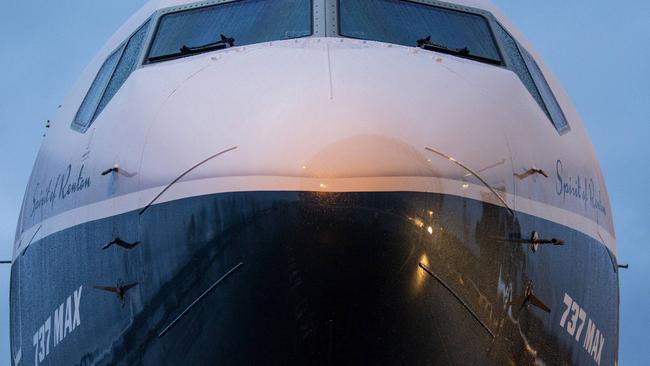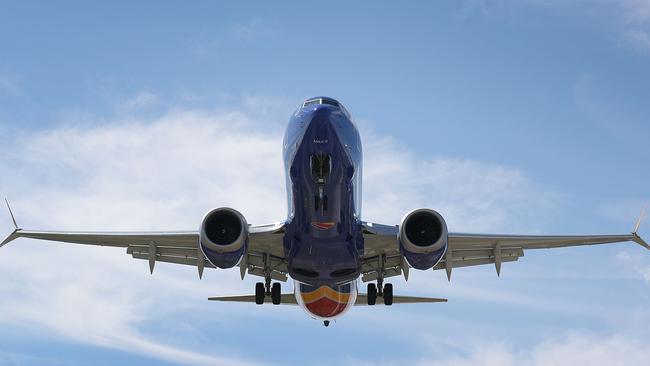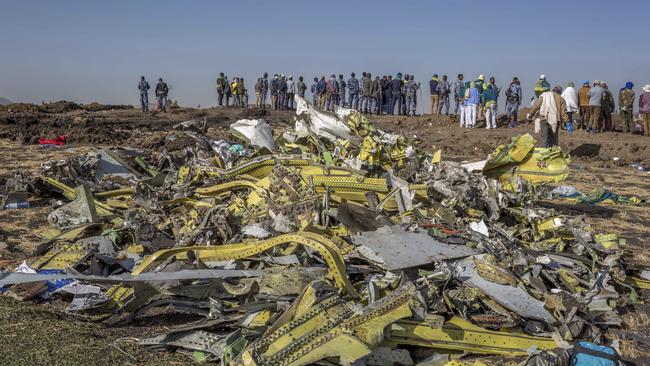What you need to know about flying on a Boeing 737 MAX 8
After the crash of Ethiopian Airlines Flight 302, Scott McCartney examines what we know about the Boeing 737 MAX 8.

The Boeing 737 MAX is the newest version of the aviation workhorse, offering better fuel efficiency and long range (and, to many travellers’ chagrin, dense seating). Since the aircraft went into passenger service in May 2017, two have crashed, killing all on board.
Both crashes — Lion Air flight 610 in October and Ethiopian Airlines 302 on Sunday — had eerily similar circumstances. Shortly after takeoff, both planes nose-dived.
The investigation into the Ethiopian crash has just begun and authorities don’t yet know if the same system suspected in the Lion Air crash played a role.
US airlines say they are watching closely and they still have full confidence in the Boeing 737 MAX airplane.
But some travellers may not, especially after China, Ethiopia and Indonesia ordered all their 737 MAX planes grounded until more is known. If you are worried about flying on a Boeing 737 MAX, here’s some helpful information:
What exactly is the suspected problem?
In the Lion Air crash, a new system Boeing installed in the MAX was suspected in a preliminary investigation report. The Manoeuvring Characteristics Augmentation System (MCAS) uses a sensor to automatically push the nose of the airplane down if it gets too high when pilots are manually flying the jet.
The MAX has larger engines than previous 737s, and they are in a slightly different position. As a result, the plane has a tendency to pitch its nose up. (This isn’t a factor when autopilot is in use.) To keep that from getting out of control if pilots flying manually aren’t attentive, MCAS automatically pushes the nose down if the sensor says the nose is too high
In the Lion Air crash, investigators suspect a faulty sensor was to blame, erroneously triggering MCAS to force the nose down.
After that crash, the FAA and Boeing sent more information about MCAS to airlines, and carriers say they passed the info on to their pilots.

How many Boeing 737 MAX planes are flying now? On which airlines?
More than 30 airlines around the world, including Southwest, American and United, operate 737 MAX airplanes, 350 in all. Southwest has the largest fleet of MAX jets, with 34 MAX 8s in service throughout its system. (Southwest has a fleet of about 750 total 737s.)
American has 24 MAX 8s. All fly to or from Miami. New York LaGuardia-Miami is a frequent MAX route: Of 12 daily flights, eight are on MAX aircraft. United is flying 14 MAX 9s, a slightly longer version with more seats, often with flights into and out of Houston, Los Angeles, Hawaii and Orlando, Fla.
How do you find out which plane you will be flying on a particular flight?
This takes a little hunting, and is an inexact science, as airlines swap planes around all the time. Southwest, American and United all show aircraft type when you search for flights on their websites. With Southwest, you have to click on the flight number. American displays aircraft type with each flight offering. With United, click on “details.”
Non-airline websites are a mixed bag. Expedia, for example, doesn’t yet display aircraft type for the 737 MAX.
If you want to get real aviation geeky about it, FlightAware will show aircraft type for a particular flight, and will let you look at all 737 MAX 8 aircraft in the air at a particular time. The code for the plane is B38M, which is different from the code 7M8 used internationally in flight schedules.
You can also look up aircraft type with FlightStats and FlightView, or with Flightradar24.

Are there actions passengers should take right now if they find out they’re flying on a 737 MAX?
If you’re booking flights now, I would choose flights on airplanes other than the 737 MAX to avoid future scheduling hassles. The reason: If the Ethiopian crash turns out to be caused by an MCAS malfunction, the plane could be grounded worldwide until a fix is designed, tested and installed, resulting in numerous flight cancellations. Don’t take that chance of getting cancelled if you have a choice.
If you are already booked on a MAX flight, it really is a matter of your personal comfort level. Know that US airlines and others have trained for MCAS malfunctions, and US airlines say they have not experienced any failures with the MAX jets.
Pilots and flight attendants wouldn’t get on the plane if they thought it weren’t safe. But if flying on a MAX is going to stress you out, ask your airline about switching to an alternative flight. That may not be easy during a busy spring-break travel season.
Still, airlines are usually forgiving on change fees after accidents. They typically don’t issue blanket exemptions, but will work with nervous travellers to rebook.
So if you are booked on a 737 MAX and want to make a change, insist that the airline waives its change fee.
What is Boeing saying about the plane?
Very little. Boeing issued a short statement on Sunday saying it was saddened to learn of the crash and that it sent a team to the crash site “to provide technical assistance under the direction of the Ethiopia Accident Investigation Bureau and US National Transportation Safety Board.”
What are the various solutions to this problem?
Boeing has been working with safety regulators on a software fix. It was supposed to be out in January, but the Journal reported in February that fix has been delayed until at least April because of disagreements over how much to change.
On Monday the FAA said it expects Boeing’s fix will be out by the end of April. The fix will limit the downward push of the automated system, the agency said.
Findings from the Ethiopian crash could complicate the plan for a software fix.
The Wall Street Journal



